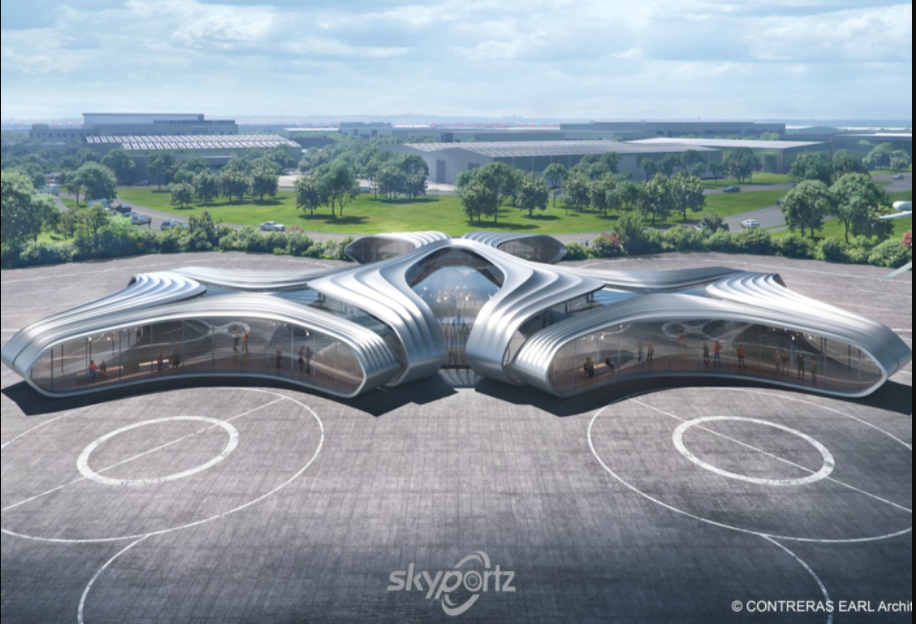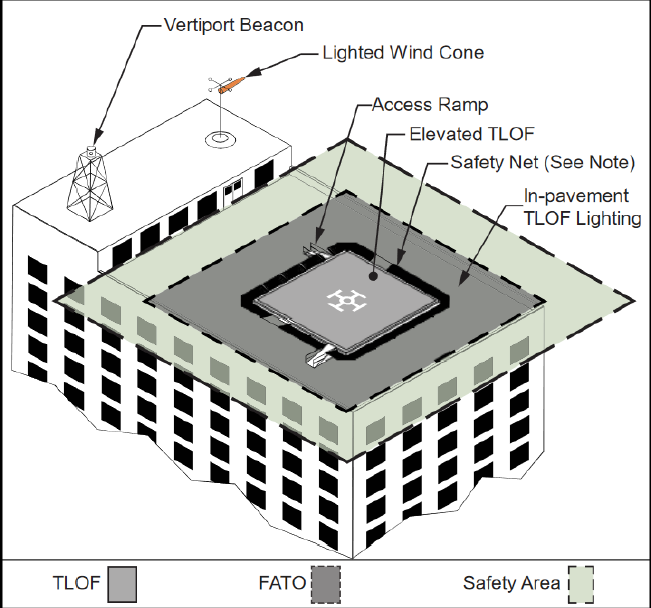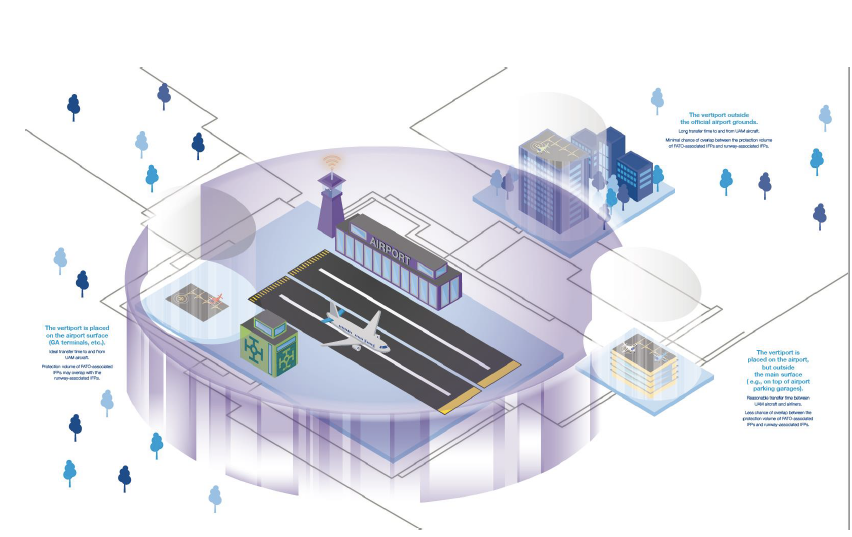
Intro
Welcome to the dawn of a new era in transportation, where our travel dreams are no longer bound by roads and rails. As urban mobility evolves, the concept of vertiports is fast becoming a reality. Just as airports revolutionized travel by air, vertiports promise to change the landscape of urban commuting. But what are vertiports and how will they shape the future of travel? Let’s take a deep dive.
Table of content
- Understanding the Concept of Vertiports
- Integrating Vertiports into Existing Infrastructure
- Environmental and Noise Considerations
- The Impact on Urban Mobility
Understanding the Concept of Vertiports
At the core of the futuristic urban landscape lies a novel concept: the vertiport. This emerging innovation serves as a launching and landing station for vehicles capable of vertical takeoff and landing (VTOL), like helicopters and, more importantly, electric VTOL (eVTOL) vehicles. As our cities move closer to a future marked by autonomous air taxis and drone deliveries, the importance of vertiports cannot be understated. Think of vertiports as the airports of tomorrow, featuring rooftop landing pads, multiple take-off and landing sites ingeniously fitted into tight urban spaces, alongside essential services like battery recharging stations and maintenance areas. Such architectural innovation and strategic positioning encapsulate the essence of a vertiport, acting as the epicenter of our future transit systems.
Physical Design Elements of Vertiports

Creating a vertiport is a study in efficiency, safety, and strategic planning. The designs need to make optimal use of limited urban spaces and also take into consideration the necessities of various types of aircraft, from traditional helicopters to cutting-edge eVTOL vehicles. Each of these aircraft types will require specific considerations for safe landing and take-off, as well as provisions for their storage and maintenance.
Balancing the needs of these various aircraft with a seamless passenger flow is another critical element in the design process. It’s not enough to simply provide a spot for vehicles to land; a vertiport must facilitate easy movement of passengers from one mode of transportation to another. This might mean integrating with existing subway or bus lines, or providing quick and easy access to ride-sharing services.
Additionally, vertiports have to be designed with an eye on the future, ready to accommodate advancements in flight technology as they emerge. As new types of VTOL aircraft are developed, these facilities will need to adapt swiftly to remain relevant and effective. Therefore, flexibility should be a key attribute in the design of these structures.
Safety regulations and standards like those pertaining to Class D airspace operations will also guide the physical design. Regulatory compliance will ensure that these new additions to the urban landscape can operate safely alongside traditional aircraft.
While vertiports come with a host of design challenges, the potential benefits they offer in terms of increased efficiency and reduced traffic congestion make these hurdles worth overcoming. As we stand at the brink of a new era in urban transportation, the physical design of vertiports will play a crucial role in shaping our cities’ futures.
Integrating Vertiports into Existing Infrastructure

The integration of vertiports into our existing cityscape presents an exciting challenge. Instead of constructing entirely new structures, there is potential to transform underused parts of our urban infrastructure into efficient, modern vertiports. The skyward expansion of rooftops, for instance, could offer suitable spaces for vertiport facilities. This adaptive reuse can make the most of our current resources while paving the way for the future of travel.
The incorporation of a vertiport into existing structures depends largely on the amount of space available. With enough area, a multi-pad vertiport could be established, allowing for diverse commercial operations and services. Alternatively, in more limited spaces, the focus might be on single-pad vertiports designed for specific purposes, such as emergency service flights.
The integration process needs to be carried out thoughtfully and meticulously. It should account for the structural integrity of existing buildings, safety regulations, proximity to other modes of transport, and potential impact on the local community. Seamless connectivity to other forms of transportation, such as subways or buses, is another critical aspect to consider.
Importantly, as we embed vertiports into the urban fabric, we need to ensure they are not just functional but also aesthetically pleasing, adding value to the cityscape rather than detracting from it. The ultimate aim is to create vertiports that not only meet the technical requirements of VTOL vehicles but also enhance the overall urban experience.
Environmental and Noise Considerations

Vertiports and eVTOLs are often hailed for their environmental advantages. eVTOLs, which are central to the operation of vertiports, run on electricity, effectively eliminating the release of harmful emissions during use. This significant shift toward cleaner technology can lead to improved air quality in urban areas, a benefit that cannot be overstated in the battle against pollution and climate change.
Equally important is the vertical construction design employed in vertiports and the aircraft they service. This design approach significantly diminishes the land area required for their operation, thereby limiting their environmental footprint. For densely populated urban areas where every square foot counts, the reduced land usage can help conserve valuable space for other crucial urban needs, such as green spaces and housing.
Apart from the environmental benefits, noise pollution is another crucial consideration in the design and operation of vertiports. eVTOLs are generally quieter than their traditional combustion-engine counterparts, but they still produce some noise. As vertiports become more common, it will be essential to address these noise concerns to prevent a significant increase in noise pollution in urban areas. Strategies might include specific flight paths over less populated areas, acoustic shielding designs, or advancements in quieter eVTOL technologies.
In essence, the integration of vertiports into our urban landscapes offers significant environmental benefits but also presents challenges in noise management. How these challenges are addressed will have a significant impact on the acceptance and success of vertiports in the future urban mobility landscape.
The Impact on Urban Mobility

The advent of vertiports presents a revolutionary approach to addressing the issues of urban transportation. As our cities continue to expand, so do the associated issues of traffic congestion and increased commute times. Vertiports, with their skyward-bound solutions, can potentially alleviate these issues, by creating an efficient and effective alternative to ground transportation.
Shifting a portion of traffic from our roads to the skies would essentially redefine our urban mobility landscape. By utilizing air space for transportation, vertiports could significantly decrease congestion on city streets. Imagine replacing time-consuming cross-town drives with quick, direct flights. The transformative potential of this shift would not only enhance the effectiveness of urban transport systems but could also contribute to improved quality of life by reducing commute-related stress.
Furthermore, decreased road congestion could lead to improved conditions for other forms of transportation, such as cycling or walking, making our cities safer and more enjoyable. With less ground traffic, there could also be potential improvements in road maintenance and safety, further boosting the overall efficiency of our urban mobility systems.
However, it’s essential to acknowledge that such a transformation won’t happen overnight. A carefully planned and staged introduction of vertiports, with ongoing adjustments based on practical experience and advancements in technology, will be necessary to achieve this future vision of urban mobility.
